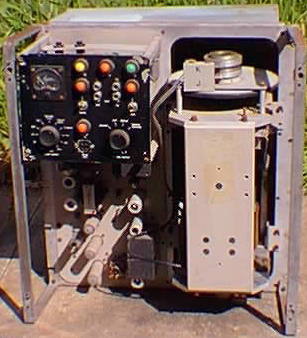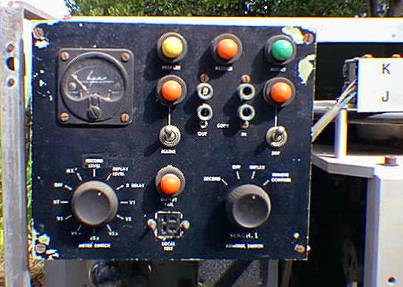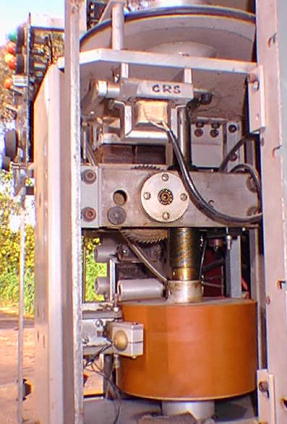Today, pre-recorded message systems for the telephone network use a variety of storage methods depending upon the application: semi-conductor memory, magnetic or optical disc. In the 1950's and 60's only analogue audio recording techniques were available. The unit shown here is a magnetic drum recorder used by the P.M.G. ( now called Telstra ) to provide an automatically repeating pre-recorded message.

It is not clear when this unit was manufactured but I assume this unit was manufactured by Byer as their name appears on the meter scale and the drive motor and as control knobs are Byer's own design it would be logical to assume that it was manufactured by Byer. The only documentary evidence I have of magnetic drum recorder manufacture in Australia is a paper published in the Proceedings of the IREE Australia, titled "Modern Magnetic Recording Techniques" by M.W. Johnson, Nov 1962. In part of the paper there is a description of a twenty four channel transistorised drum recorder which was manufactured by the Magnetic Recorder Division of the Rola Company (Aust.), formerly Byer Industries. As the paper was submitted on Dec. 23 1960 I suspect that unit I have was manufactured earlier. Rola made a similar but more compact unit called a Variable Message Repeater (VMR) MkII which was used transistorised circuitry and as Byer Industries was purchased by Rola approximately three years prior to article being submitted for publication it is possible that Rola did manufacture unit shown here.

This is the operator's control panel which provides function selection controls and indicators, 600 ohm balanced line input and output, and metering which is selectable between programme level and system voltages (mainly tube plate voltages).

This shows the magnetic drum which is on a lead screw and as it rotates the drum is driven upward so the magnetic head traces out a spiral path on the drum. Just before the useful magnetic material looses contact with the head a limit switch operates and the lead screw is released allowing gravity to cause the drum to drop to the starting point. When the auto-repeat replay mode is selected the programme material will continuously be replayed. I have no technical information for this despite this I have had it operating and was able record and replay some signals. The odd thing about the unit is that there is no internal 24V dc supply for the relays and solenoids, then as this equipment was to be used in a telephone exchange then the specification may have called for external supply of a 24V dc control voltage.
